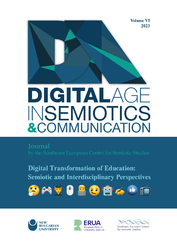Attempting a Gendered Cultural Semiotic Analysis through the Transmedial Study of the Myth of Carmen
Attempting a Gendered Cultural Semiotic Analysis through the Transmedial Study of the Myth of Carmen
Author(s): Iokasti-Christina FoundoukaSubject(s): History, Social Sciences, Gender Studies, Sociology, Gender history
Published by: Нов български университет
Keywords: myth of Carmen; cultural semiotic; strong female; gender;
Summary/Abstract: The story of Carmen is perhaps one of the most translated, adapted, culturalized, indigenized and re-produced stories in the western world’s canon. Carmen herself has become a myth, an icon, a strong sign of female independence, eroticism and threat. Although suggested to be read as an Orientalistic story of a femme fatale, later readings and reproductions have turned the story of Carmen into a discourse regarding gender, class, race and systems of power. “Whether the adaptation portrays Carmen as victim or victimizer, in short, depends on the politics of the particular contexts of creation and reception” (Hutcheon 2006: 154). This study, however, does not aim to contribute to this vast discourse on femininity, sexuality and violence1, all issues raised by Carmen’s story, but rather track the adaptations and trace the cultural ideologies manifested through female representation. Women in culture, in this case Carmen, act as a counter mirror, reflecting the culture’s Other. Quoting Pollock (2003: 210) “woman is the sign, not of woman, but of that Other in whose mirror masculinity must define itself ”. In this case study of Carmen’s adaptations, cultural semiotic theory will be used as a methodological and analytical tool in the attempt to understand how the sign “woman” is used almost metonymically as the embodiment of counter-culture.The story of Carmen is perhaps one of the most translated, adapted, culturalized, indigenized and re-produced stories in the western world’s canon. Carmen herself has become a myth, an icon, a strong sign of female independence, eroticism and threat. Although suggested to be read as an Orientalistic story of a femme fatale, later readings and reproductions have turned the story of Carmen into a discourse regarding gender, class, race and systems of power. “Whether the adaptation portrays Carmen as victim or victimizer, in short, depends on the politics of the particular contexts of creation and reception” (Hutcheon 2006: 154). This study, however, does not aim to contribute to this vast discourse on femininity, sexuality and violence1, all issues raised by Carmen’s story, but rather track the adaptations and trace the cultural ideologies manifested through female representation. Women in culture, in this case Carmen, act as a counter mirror, reflecting the culture’s Other. Quoting Pollock (2003: 210) “woman is the sign, not of woman, but of that Other in whose mirror masculinity must define itself ”. In this case study of Carmen’s adaptations, cultural semiotic theory will be used as a methodological and analytical tool in the attempt to understand how the sign “woman” is used almost metonymically as the embodiment of counter-culture.
Journal: Digital Age in Semiotics & Communication
- Issue Year: VI/2023
- Issue No: 1
- Page Range: 121-144
- Page Count: 24
- Language: English

